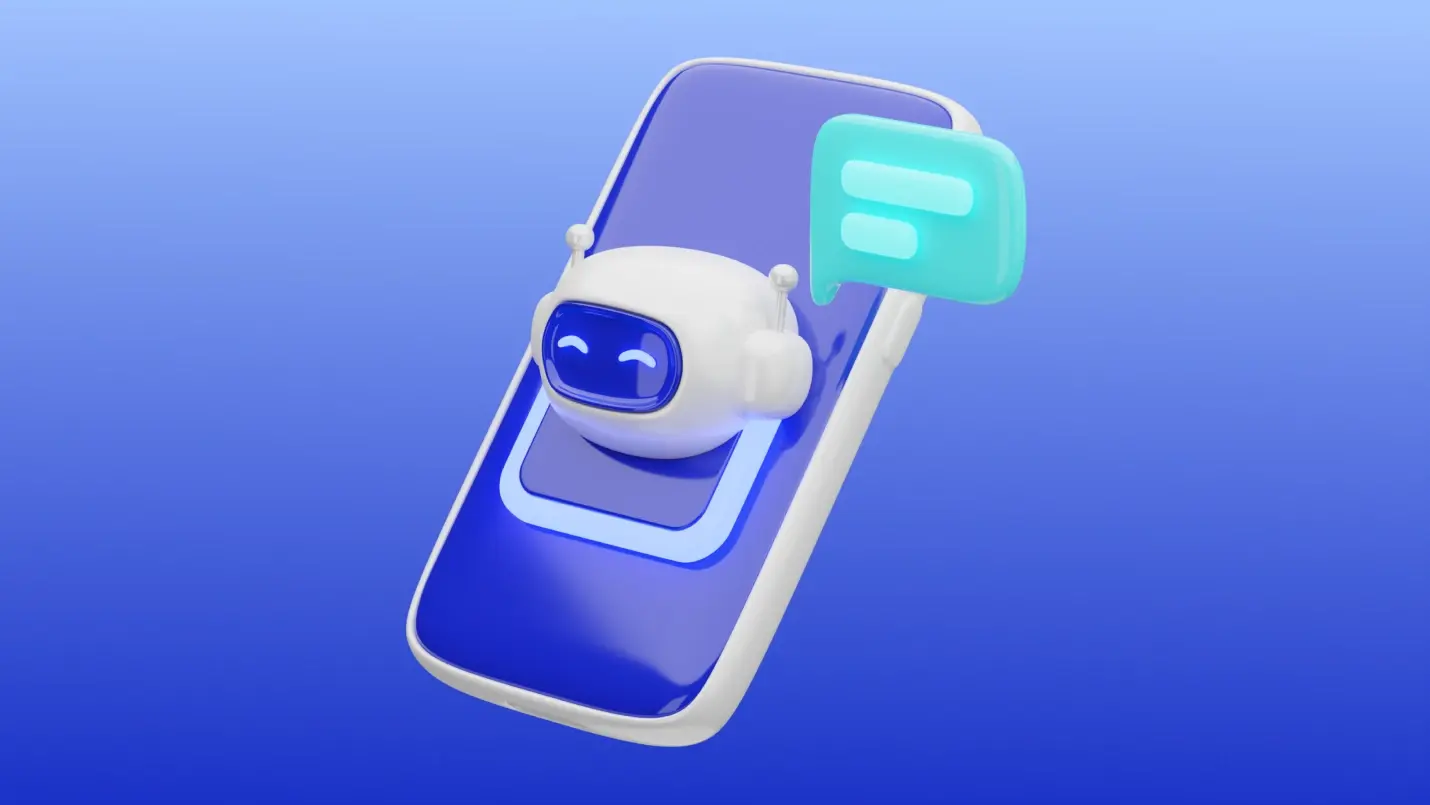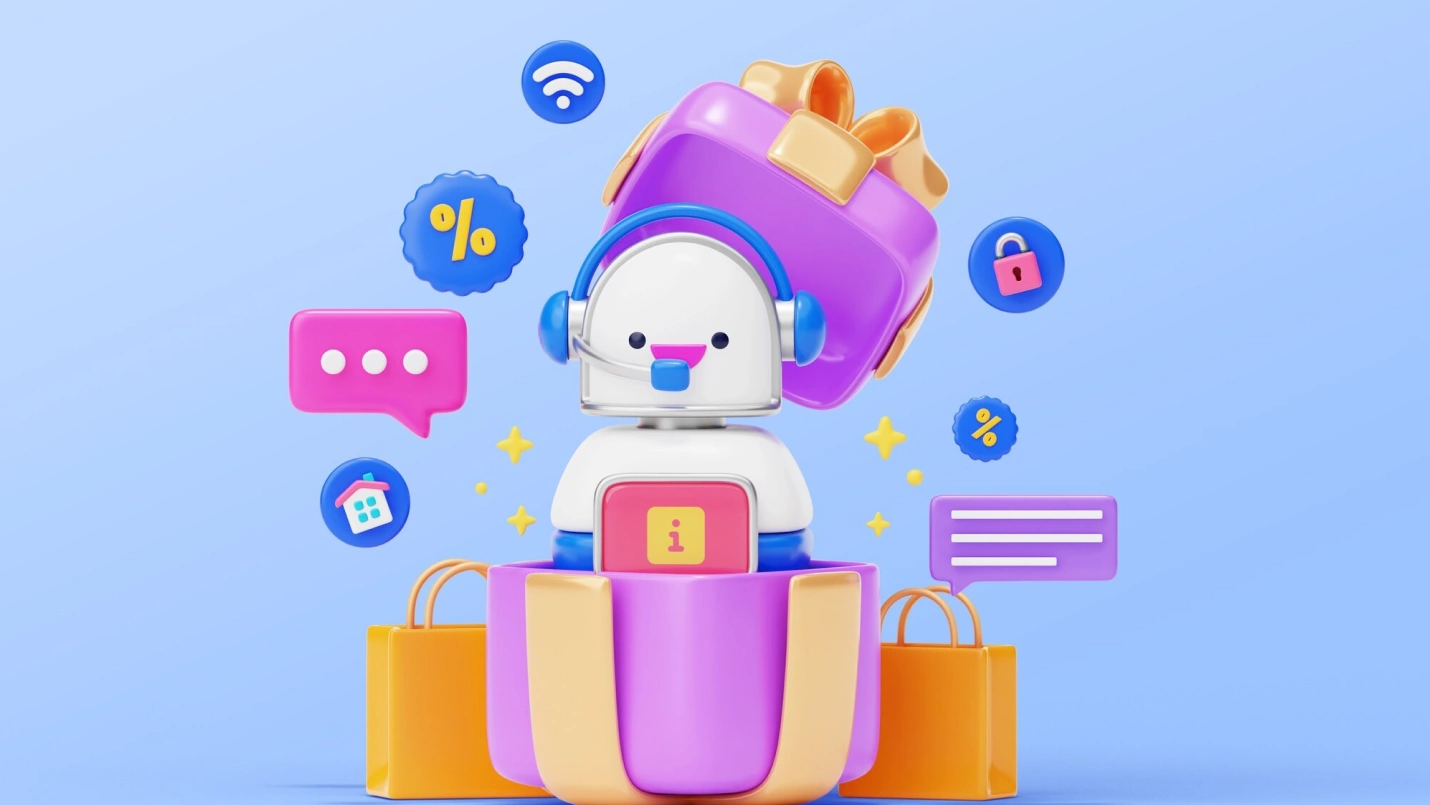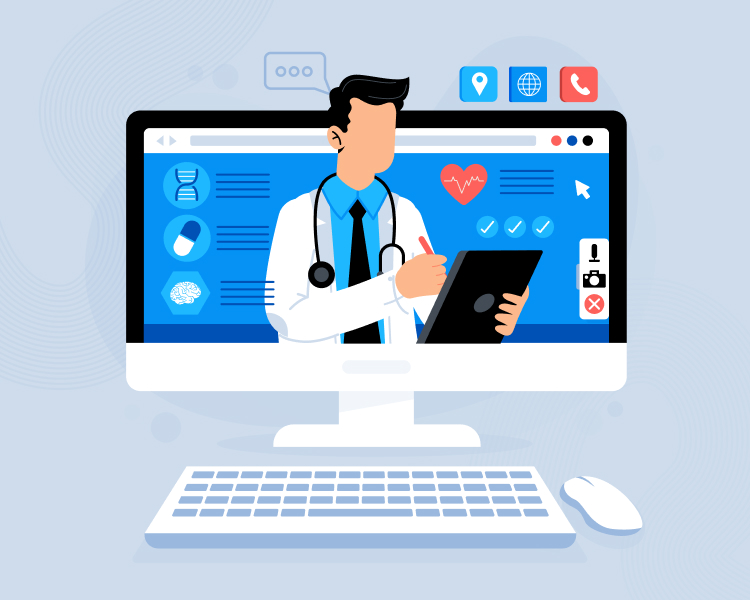Welcome to our blog post on ChatGPT, the natural language processing (NLP) tool that will have you smooth sailing to rapid application development.
First things first, let’s define NLP because we know you’re dying to know what it means. NLP is a branch of artificial intelligence that focuses on the interaction between humans and computers using natural language. In other words, it allows computers to understand, interpret, and generate human language. This technology has many practical uses, like language translation, text analysis, and chatbots.
What is ChatGPT?
ChatGPT is a chatbot development tool that utilizes NLP to allow developers to create chatbots that can understand and respond to user input naturally and conversationally. It was released as a free research preview/prototype in November 2022. It is powered by a machine learning model called GPT-3, developed by OpenAI and considered one of the most advanced NLP models to date. For those wondering why so many abbreviations and acronyms are used here and what they mean, here’s the entire flow of information!
GPT denotes ‘Generative Pre-training Transformer’ and is an AI-powered language model. “Pre-trained” implies it is based on a database of text/words, allowing it to understand the patterns & structure of natural language. Hence the responses are conversational. It takes in the context of the query and adapts itself to that.
The “transformational” structure can efficiently process long data sequences. It has layers that can prioritize words or phrases in each input. Then the model understands the context and meaning of the information better. The result is that you get better and more coherent responses. ‘Feed-forward layers’ and ‘residual connections’ enable the model to understand complex patterns. Overall, this leads to a better capture of different words and phrases.
What are the features of ChatGPT?
ChatGPT is written in the GPT-3.5 language technology, an artificial intelligence model made by OpenAI. It has been trained on a massive amount of text data from various sources. What makes GPT distinct is that it generates near-human text based on its prediction capability. You ‘talk’ to it, and it works out the following word in the sequence based on all the words you have used earlier. It would be tough to distinguish what GPT generates from what an actual human would say. This means it is valuable for language translation, generating text, chatbot responses, or any other flow where a natural conversational flow is needed.
ChatGPT follows the earlier models from OpenAI, like InstructGPT, GPT-3, and Codex. It is fine-tuned from an earlier model of the GPT-3.5 series, which ended its trial/training period in the first half of 2022.
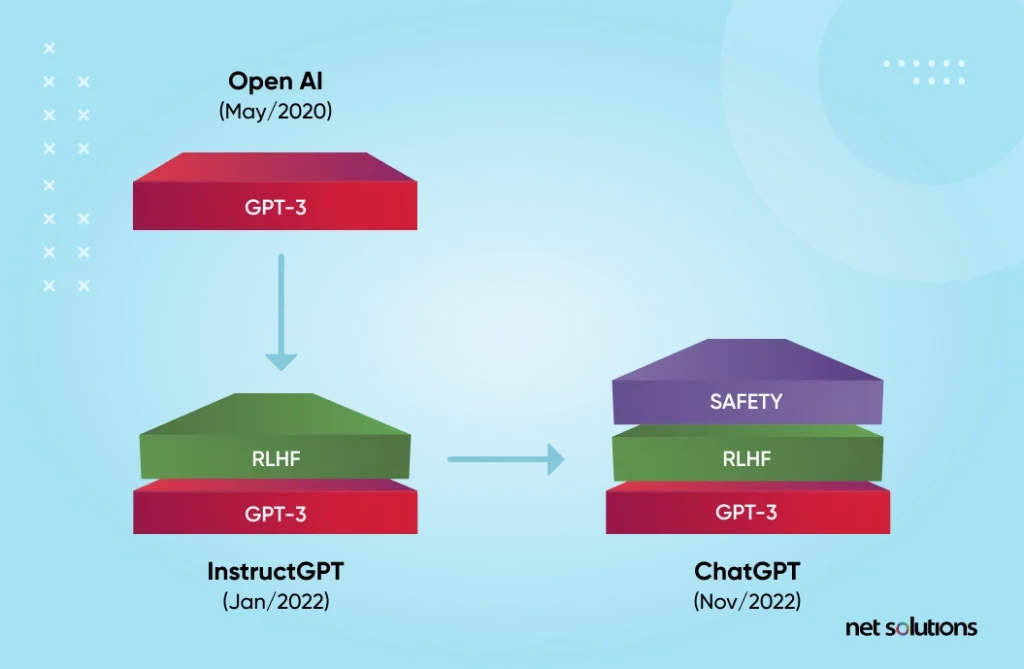
Specifically, the following are the features of ChatGPT:-
- Conversational communication
- Dynamic responses
- Comparative data and ranking-based responses
- In-depth responses
- Responds to everything and asks questions
- It is based on more than 300 billion words fed into the database
- Continual learning even as it answers, eventually getting trained to come up with better answers each time
How does ChatGPT work?
If curiosity got the better of your patience, chances are you have ChatGPT open on a simultaneous tab on your device! While you wonder at the smoothness of answers from this AI tool, here’s what we know about how it works:-
- The model has been trained using RLHF – Reinforcement Learning from Human Feedback
- Data collection is done slightly differently than the earlier models through a more supervised, fine-tuned method.
- Human AI trainers come up with conversations in which they play both the user and the AI assistant.
- These trainers have model-written suggestions to assist them in composing responses.
- The new database was combined with the earlier InstructGPT data and transformed into a dialogue format.
- Comparison data is collected from two or more model responses, ranked by quality – information is collected from conversations that AI trainers had with the chatbot.
- Several iterations of this process are conducted, and the model is fine-tuned.
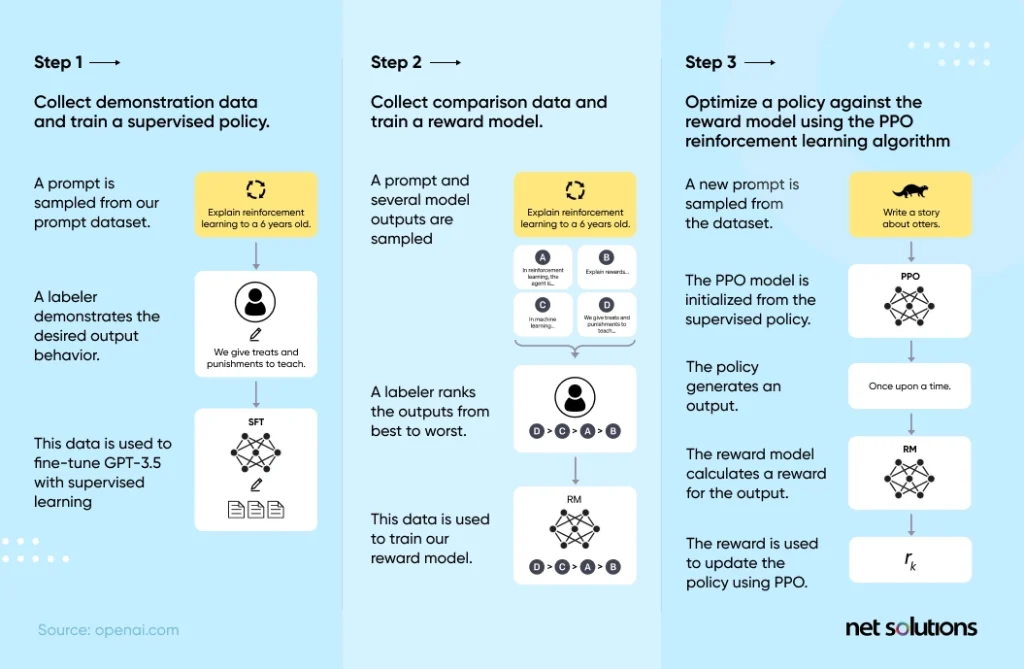
How do you use ChatGPT
ChatGPT offers a free review/research model to work with.
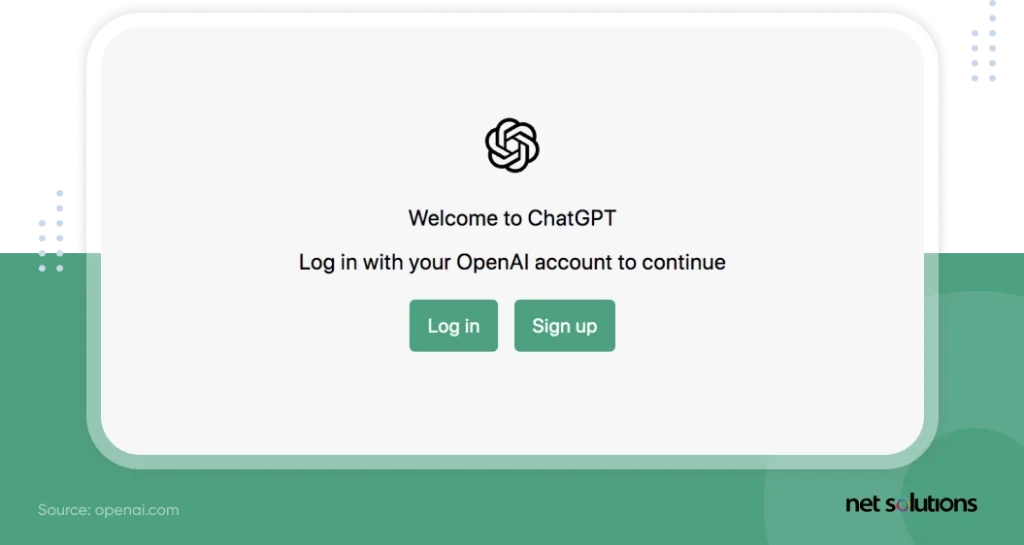
- Register with your Google or Microsoft account or any other email address
- Ensure you have a phone number you can use (not a virtual one, though) to register with a code that OpenAI provides
- You get access to the introductory page of OpenAI with information on the functioning, limitations, methodology, etc.
- Type your queries in the conversation box and generate responses
- Using a statement as an input will generate different results than using a question
- Although data is limited for events before 2021, you can regenerate responses to get multiple varieties of answers
- ChatGPT remembers your conversation, and like a human, it admits its mistakes, even challenges some premises that you might make, and sometimes refuses to answer if it finds the query beyond its scope (oh yes! In that sense, it kind of beats Alexa and Siri)
What are the benefits of ChatGPT?
1. Ability to understand and respond to a wide range of language inputs
ChatGPT can understand various language inputs, even those thought of as complex or weird! It has been trained on a large human language dataset, enabling it to understand and generate responses to a diverse range of user inputs. This makes it perfect for creating chatbots that handle many customer inquiries or requests.
2. Ability to learn and improve over time.
As ChatGPT processes more and more user input, it can adapt and enhance its responses to meet users’ needs better. This means that the chatbots created using ChatGPT can become more effective and efficient over time, leading to a better user experience.
3. Enabling rapid application development
With its intuitive interface and pre-trained NLP model, ChatGPT allows developers to create chatbot applications quickly and easily. This can be especially useful for businesses that need to rapidly develop and deploy chatbot applications to meet changing customer needs or market demands.
ChatGPT highlights an interesting factor: work in a human-machine hybrid mode. Humans can not only prompt AI for good results. They can also guide and correct mistakes that AI might make. In a symbiotic relationship, both the human and the AI are helping each other become “experts”.
How can ChatGPT be used for application development?
There are numerous ways that developers can utilize this tool. ChatGPT can be used in various industries and scenarios to create functional, innovative, engaging chatbot applications. Broadly, the use cases are of the following forms:
- Chatbots: for normal human conversation
- Translation: of words from one language to another
- Summarization: to conceptualize the main aspects of any topic
- Completion: for efficiently completing sentences/paragraphs
- Creation: of fresh content
Chatbot development services take a different turn with ChatGPT functioning in its natural and conversational mode. In terms of specific industries and services, this is how the ChatGPT can contribute:-
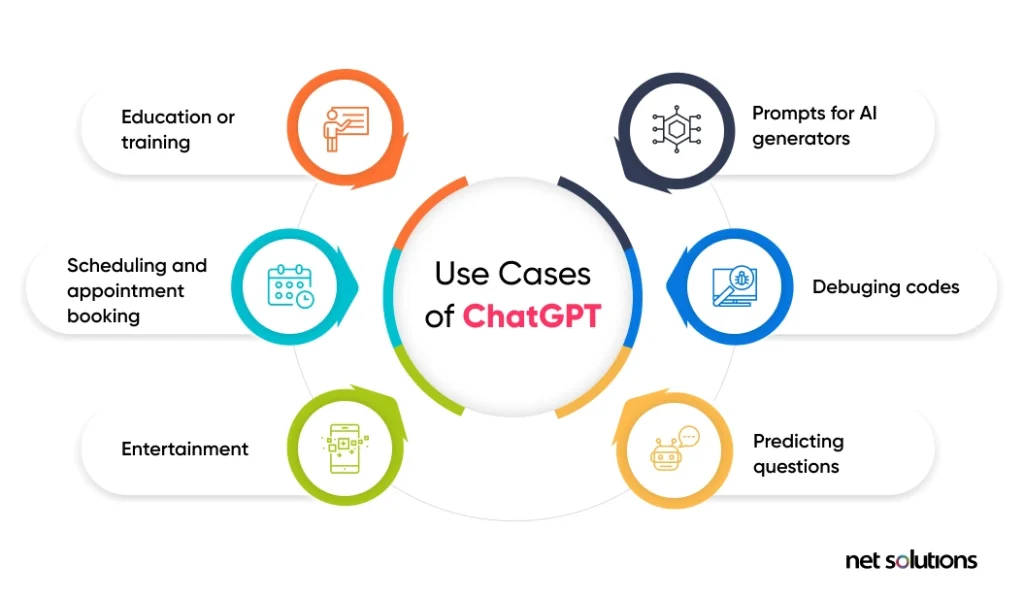
1. Customer service
By using ChatGPT to create a chatbot that can understand and respond to customer inquiries and requests naturally and conversationally, businesses can provide a more efficient and convenient customer service experience. This can save time and resources for both the business and the customer.
2. eCommerce websites
These could be functional, humorous, and relatable. ChatGPT can be used to create chatbots that can assist customers in finding products, providing recommendations, and completing transactions. This can provide a more personalized shopping experience for customers and potentially increase sales for the business. A semblance of real human interaction with wit, enjoyment, and apt expressions in words makes up for a fulfilling shopping experience.
3. Education or training purposes
Students and employees can gain from the personalized learning experience that customized content and assessments bring. These are based on the user’s needs and progress. This can be especially useful in industries where ongoing training is necessary, such as healthcare or finance.
4. Scheduling and appointment booking
Chatbots can facilitate the scheduling process, allowing users to easily book appointments or reserve resources without navigating a complex system or waiting on hold. This can be especially useful for businesses that rely on scheduling, such as healthcare providers or service providers.
5. Entertainment or leisure
Chatbots could create virtual assistants for music or movie recommendations or provide personalized workout or meditation routines. ChatGPT’s ability to understand and respond to user input naturally and conversationally makes it well-suited for these applications.
6. Travel Industry
Chatbots could assist in booking flights, hotels, and rental cars and provide recommendations for destinations and activities. This could make the travel planning process more efficient and convenient for users.
7. Healthcare Industry
Chatbots could be used to provide medical information and assistance, such as answering frequently asked questions or providing symptom checkers. This could alleviate some burdens on healthcare professionals and provide a more convenient resource for patients.
McKinsey states the business use cases succinctly:
- Marketing and sales—crafting personalized marketing, social media, and technical sales content (including text, images, and video); creating assistants aligned to specific businesses, such as retail
- Operations—generating task lists for efficient execution of a given activity
- IT/engineering—writing, documenting, and reviewing code
- Risk and legal—answering complex questions, pulling from vast amounts of legal documentation, and drafting and reviewing annual reports
- R&D—accelerating drug discovery through a better understanding of diseases and discovery of chemical structures
Limitations of ChatGPT
ChatGPT is a powerful tool for developers looking to create chatbot applications using natural language processing. Its ability to understand and respond to complex and varied language inputs and learn and improve over time makes it an ideal choice for creating chatbots that can provide value to users.
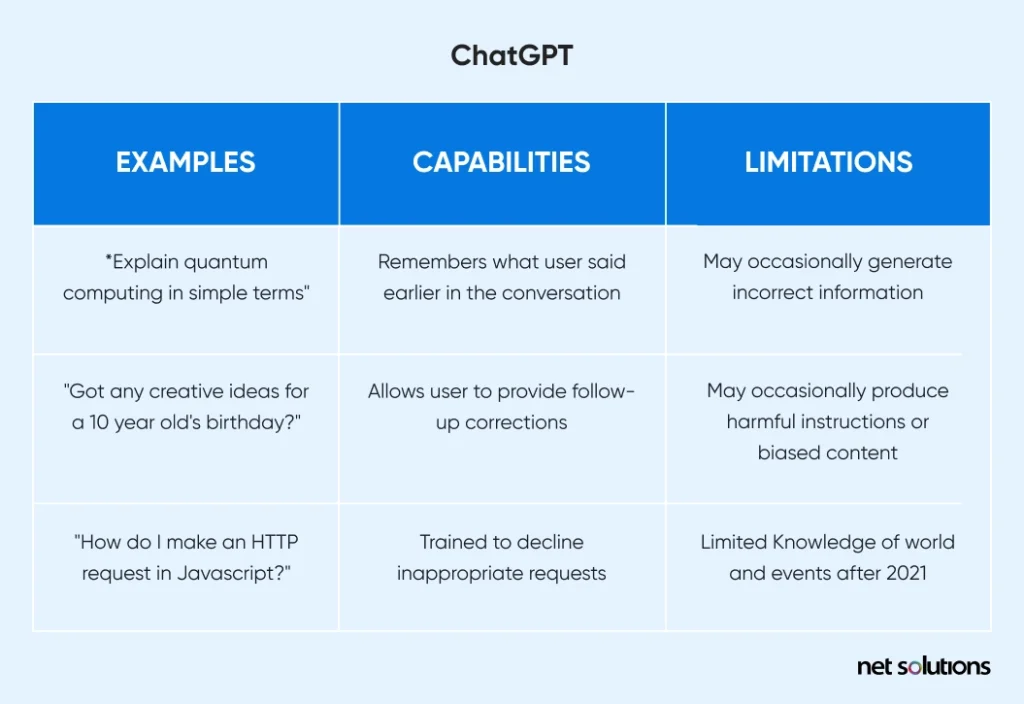
- Size of Database: Even with its extensive database, ChatGPT can sometimes slip on catching the real-time diversity of languages, experiences, and cultural diversities. Hence responses sometimes turn out to be out of context or inappropriate.
- Pre-trained models: Factually, ChatGPT depends on machine learning algorithms trained by data. Given that there are chances that the training may be biased or faulty, we can’t rely on the correctness of the responses. There could be systemic biases too.
- Resource Intensive: The model draws power from many resources. This could be a limitation for mobile devices or some low-power devices.
- Timeline: ChatGPT doesn’t cover events post-2021 yet. So you will not find answers to queries related to anything after that time.
- Cost: It is reported that the model currently costs US $3 million per month to run. This can prove to be unmanageable in the long run. Plus, people need to find out where the costs for users will be placed once the model review/research period is over.
- The complexity of facts: The model can only sometimes handle a series of attributes about people, places or events, etc. Given the pre-trained structure, the it could confuse factors and give random answers. Also, given that data is from the internet, the responses could be biased. Generative AI can be wrong too! It cannot always have multiple perspectives.
Frequently Asked Questions
ChatGPT has been subject to various conversations, yet it does have its limitations of complex database, limited time coverage till 2021, and high maintenance cost. Whether it dethrones any search engine remains to be seen. At best, for now – it will make search better for the average user and give Google competition so that there is an incentive to improve & innovate.
Other language generators are available to select audiences. ChatGPT is different from all in that it is open to all so far and generates human-like conversations. Having brought in almost one million users in the first five days of its launch, ChatGPT provides the intuitive human interaction that people crave.They collaborate with stakeholders, such as subject matter experts, end users, and other team members.
No language generator can ever be “sentient.” The model is “trained” to answer queries. It will give predictive answers in reply to some questions. It is relatable because its language is as near to a human as possible – natural & conversational. However, it is not in a thought process when not in use. Neither can it ‘think’ on its own. It remains static, without any ‘awareness.
It isn’t easy to imagine that the ChatGPT model can completely replace jobs. AI can be used for work and in various industries, yet you will still need humans to train AI models and check the facts’ integrity. It might perform some functions like research and writing better than humans but will still need humans for further improvements.

